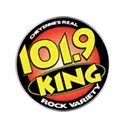
Here’s A Refresher On How To Merge Onto Wyoming Roads
We are into holiday traveling season and thought it was a good idea to refresh your merging skills while driving.
Whether it's merging onto a highway or merging into traffic on a street, knowing the proper way to merge is important. I've seen to many close calls lately and thought we should cover the basics of merging. Using the proper procedures will help ensure your experience.
According to Dr. Terry Kline, a leading authority on driving safety and an expert on traffic rules, says that a merge is one of the highest risk maneuvers that a driver will do.
The reason it's so tough, is because you're being asked to be aware of what's going on in front of you, behind you and beside you all at the same time.
It sounds bad, but it's hard for many humans to pay attention to one thing at a time, let alone three. So learning to merge properly is important.
One of the many benefits of living in Wyoming is the lack of traffic on most of the highways. This means that the merging is a little easier, but that doesn't mean it's not dangerous if you don't know the best way to merge.
Here are the proper steps to safely merge into oncoming traffic
- First thing to remember is that YOU don't have the right away, you need to adjust to the cars that are coming.
- Build up proper speed - to make a proper merge, you should be at the same speed as the oncoming traffic
- Look in your mirrors and pay attention to cars in front of you, behind you and beside you
- Use your turn signal - Turn your turning indicator on and turn it on early so other drivers know your intentions. Just cause you have your turn signal on, doesn't mean you can merge when traffic is coming.
- Look for a proper gap - Begin looking for an opening before you get to the merging lane. Glancing into your mirrors while keeping your eyes on the road is important. You'll be able to see what others around you are doing.
- When you see a proper gap in traffic, merge your car in safely.
Tips to make the merge process easier and safe
- Take notice of other drivers behaviors - If they're slowing, they could be leaving you room to merge in. Don't assume, just take note.
- Create gaps that are a safe distance from the cars in front of an behind you.
- Don't merge too soon or quickly. Other drivers may not notice you.
- Don't stop in the merge lane. If traffic is heavy, make eye contact with the driver behind you, keep your speed and ease into the gap
- When you see cars merging, be courteous and stay alert of your surroundings.




